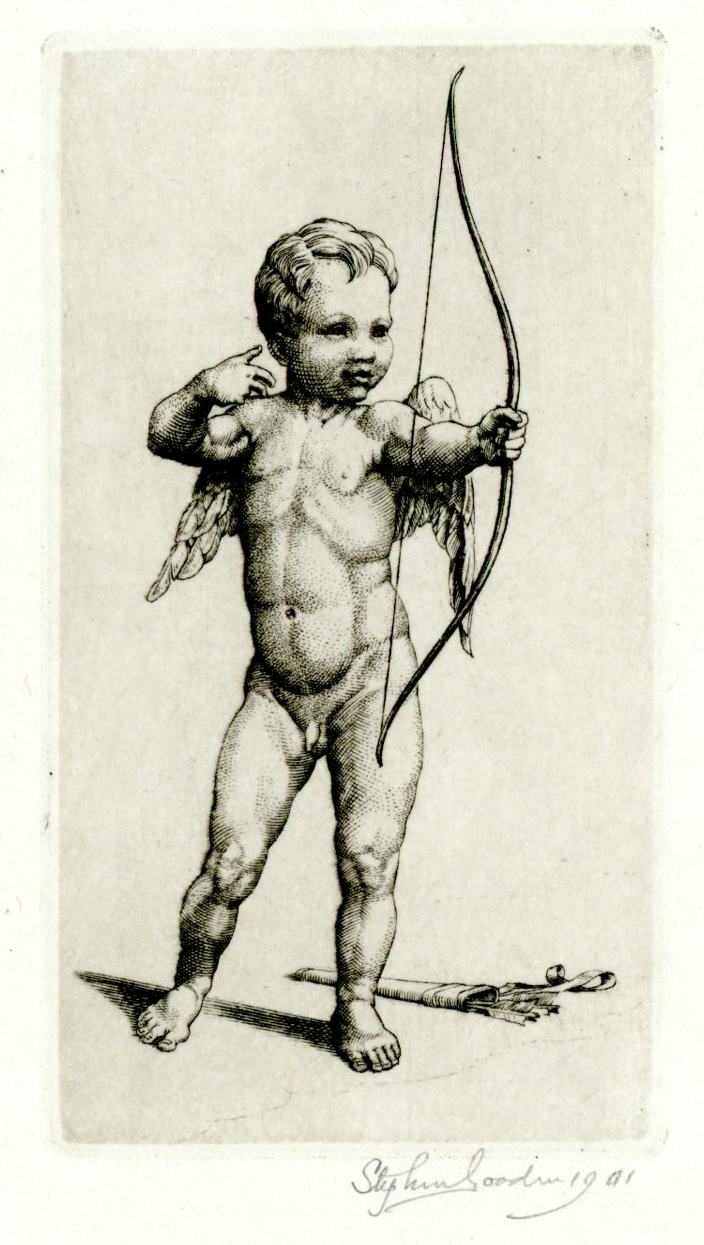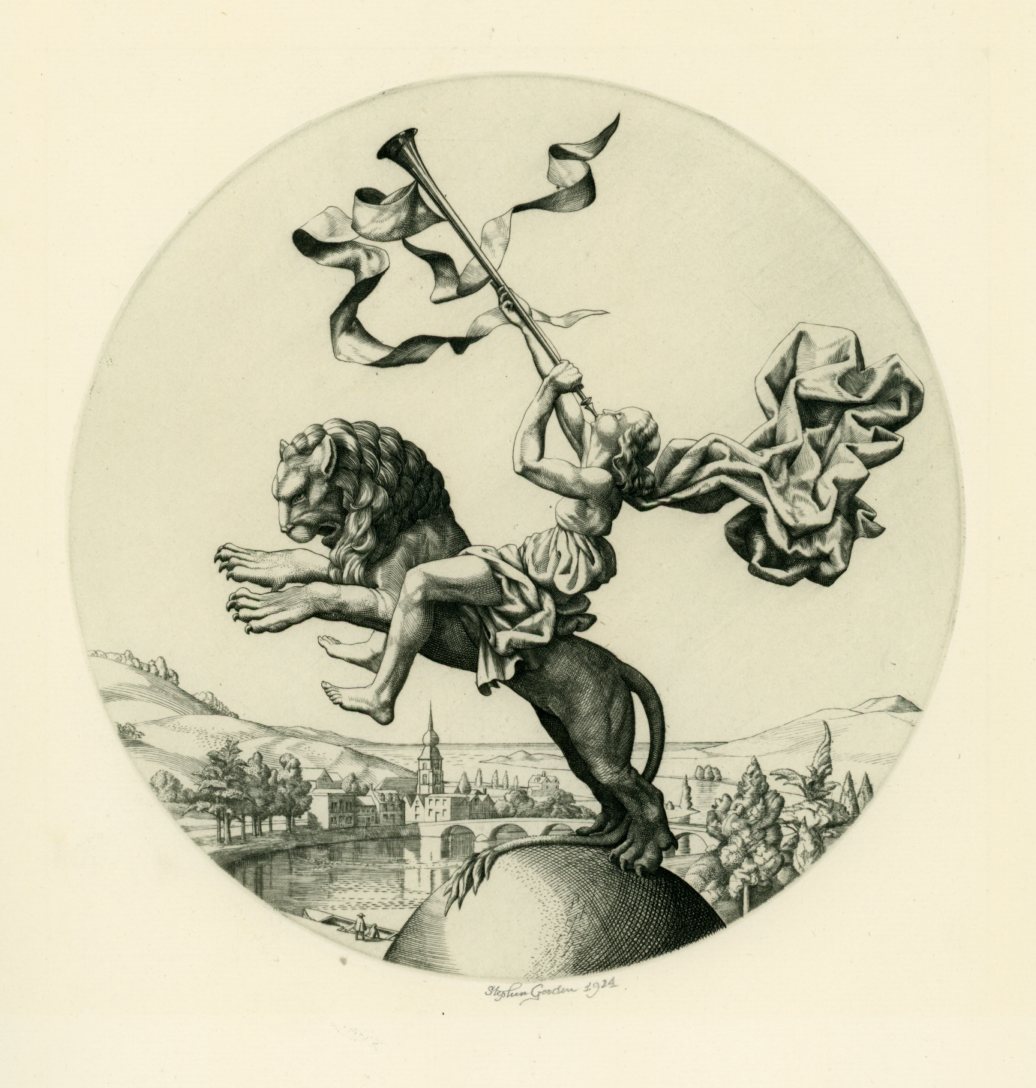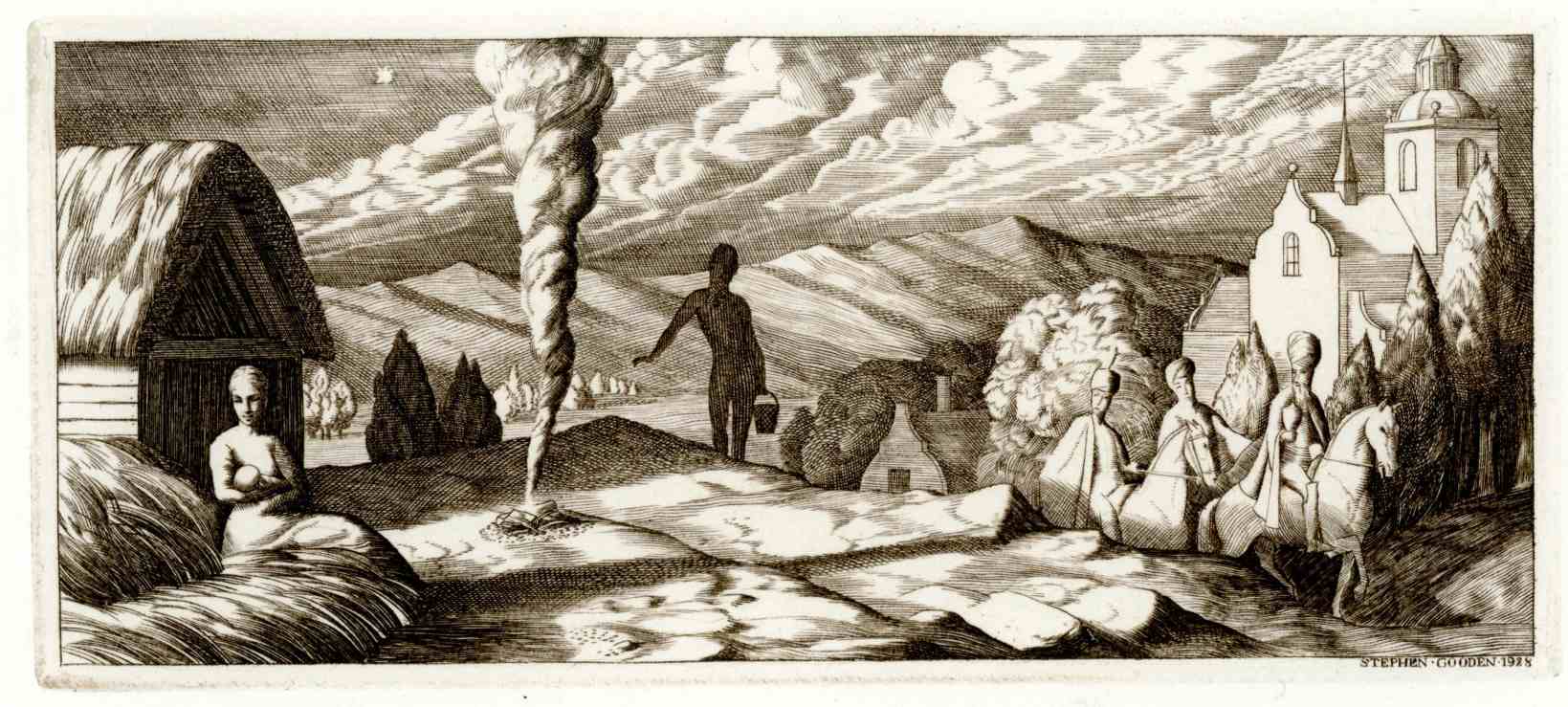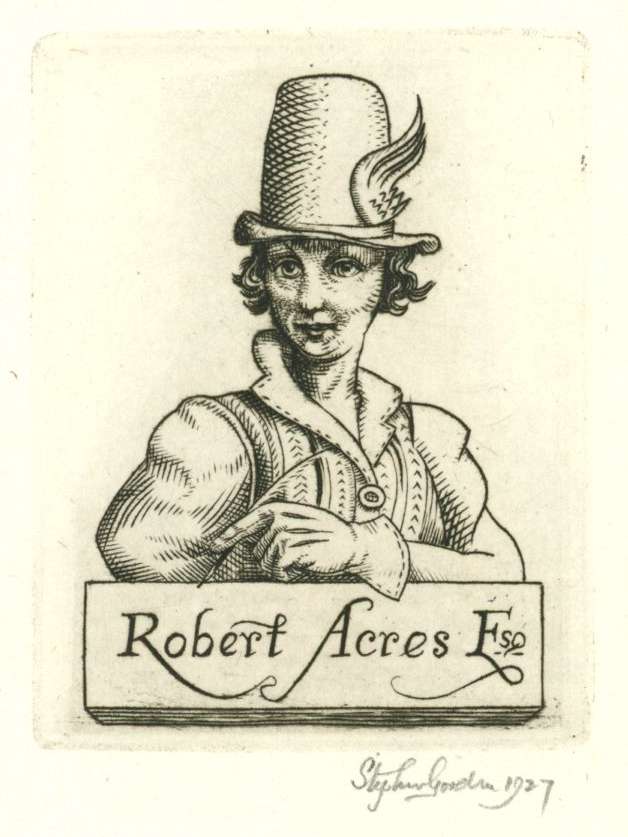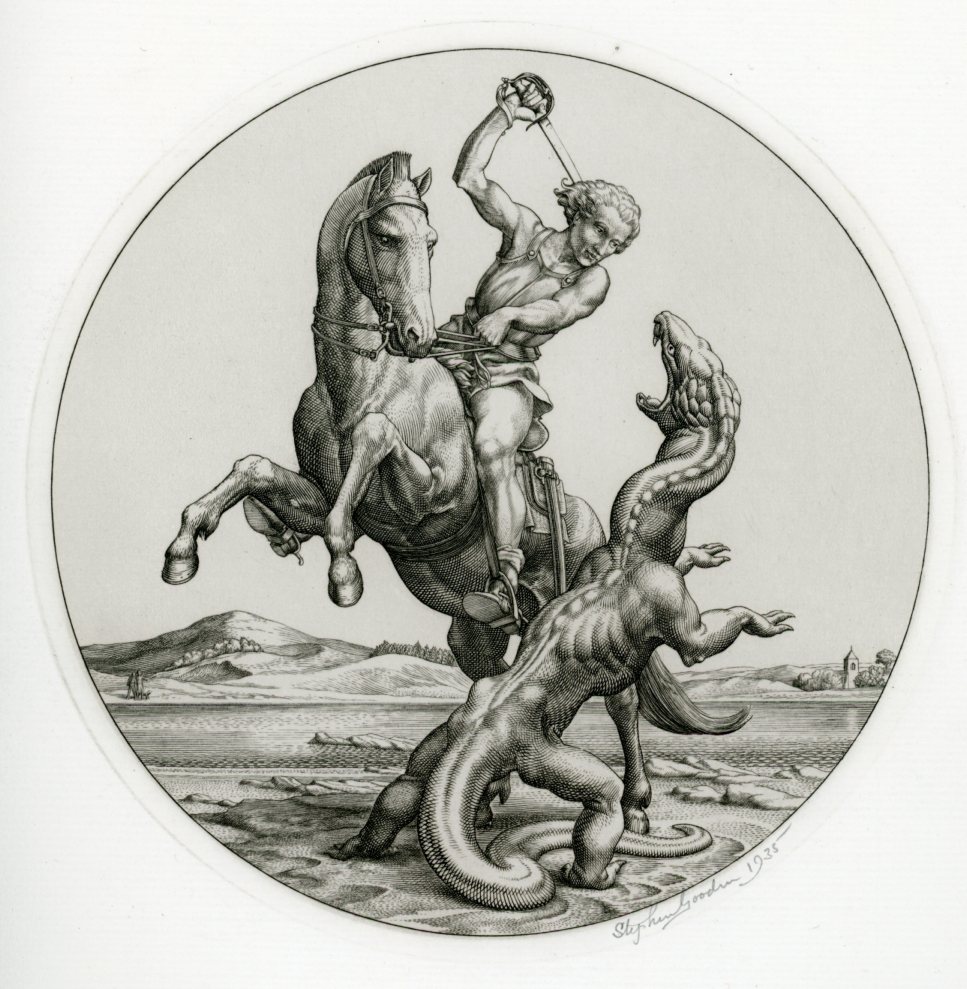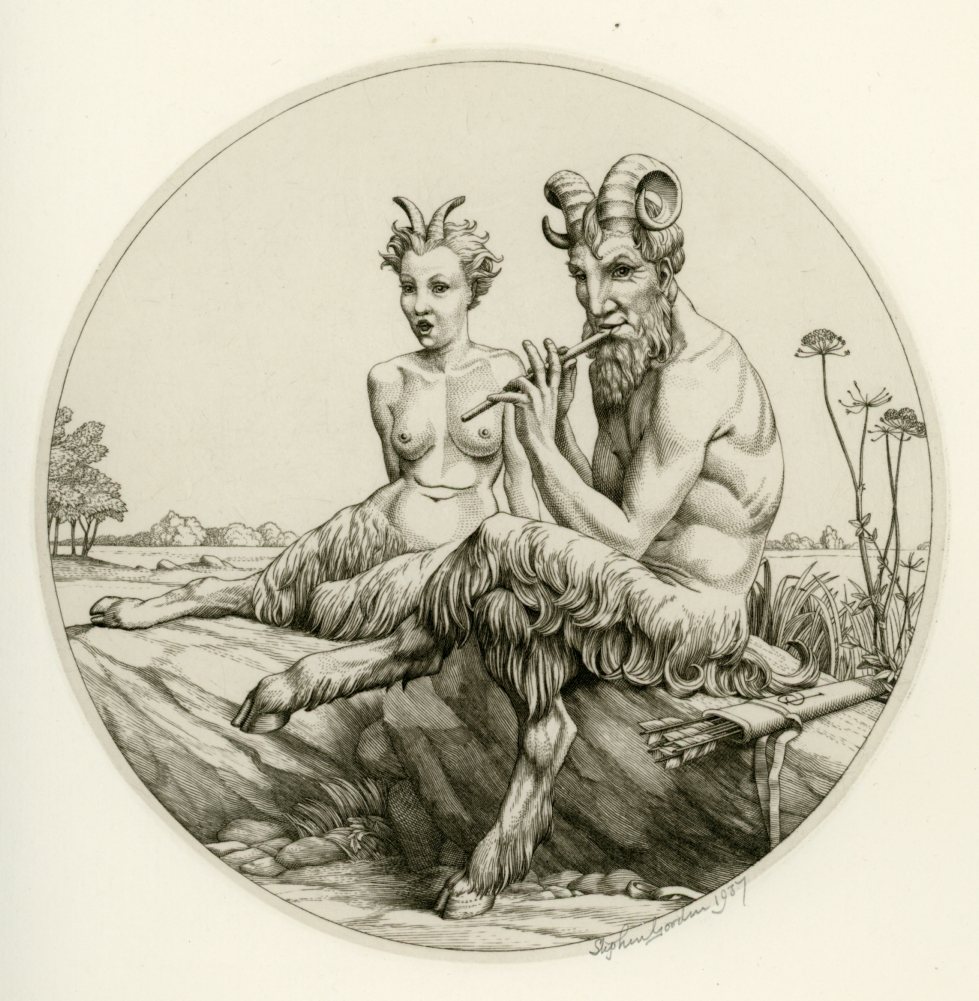Some engravings by Stephen Gooden
This page shows my collection of Stephen Gooden's designs engraved on copper, which are shown below in chronological order. The bookplates and illustrations for books are show on separate pages.
The coding system I have used for his designs is shown on the catalogue page for his designs for bookplates, labels, coats-of-arms and devices.
(Upadated on 20/10/23)
E5: The Rider on the Lion
Date: 1925
Plate size: 152 mm in diameter
Campbell Dodgson (1944): 5
States: three
Proofs: 100 impressions
Notes: This engraving was reproduced as the frontispiece to a patriotic poem entitled 'The Trumpeter of St George' by G. Rostrevor Hamilton which was published in 1941 by George G. Harrap for the Royal Society of St George.
E7: The Magi
Date: 1926
Plate size: 59 x 135 mm
Campbell Dodgson (1944): 7
States: three states
Proofs: unknown
Notes: This engraving is signed and dated 'STEPHEN GOODEN 1928' in the lower right margin and was used by Sir Geoffrey Keynes (1887-1982) as his Christmas card in 1928 and again in 1947 (shown here). Keynes was an important patron of Gooden and as well as commissioning his own bookplate (B8), he commissioned Gooden to design two bookplates for the Royal College of Surgeons (B37, B38), the last that Gooden designed before his death.
E8: Robert Acres
Date: 1927
Plate size: 60 x 48 mm
Campbell Dodgson (1944): 8
States: only state
Proofs: 12
Notes: This is a portrait engraved in zinc of Mona Gooden, the artist's wife, in fancy dress. Robert or 'Bob' Acres is a Quack Doctor in Sheridan's play, 'The Rivals'.
E12: MR W.H.
Date: 1931
Plate size: 95 x 64 mm
Campbell Dodgson (1944):128
States: two states
Proofs: 12
Notes: This is another engraved portrait of Mona Gooden, the artist's wife, in fancy dress. It was designed as a Frontispiece for an edition of Shakespeare's sonnets to be published in the USA, but has not been found in any book.
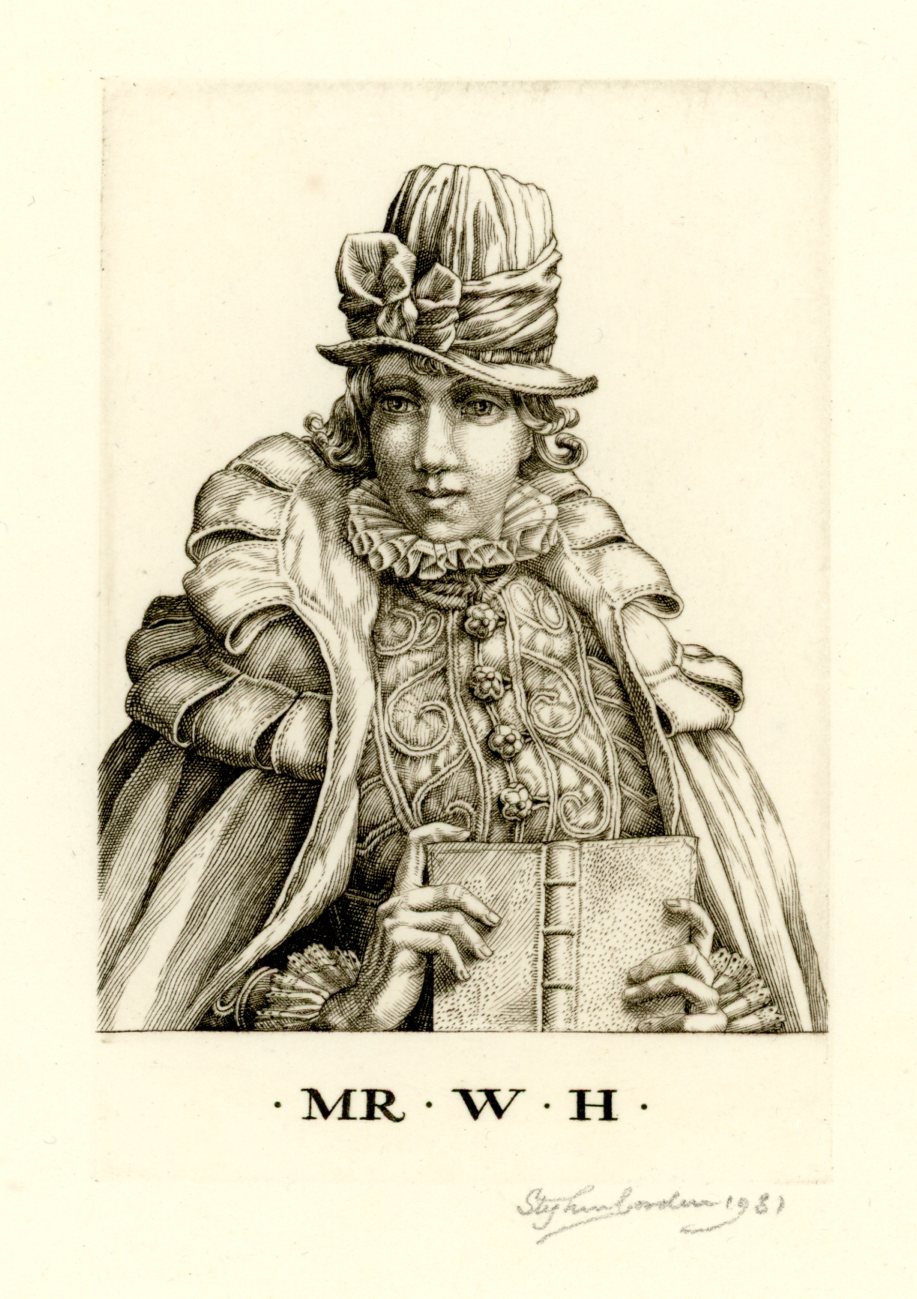
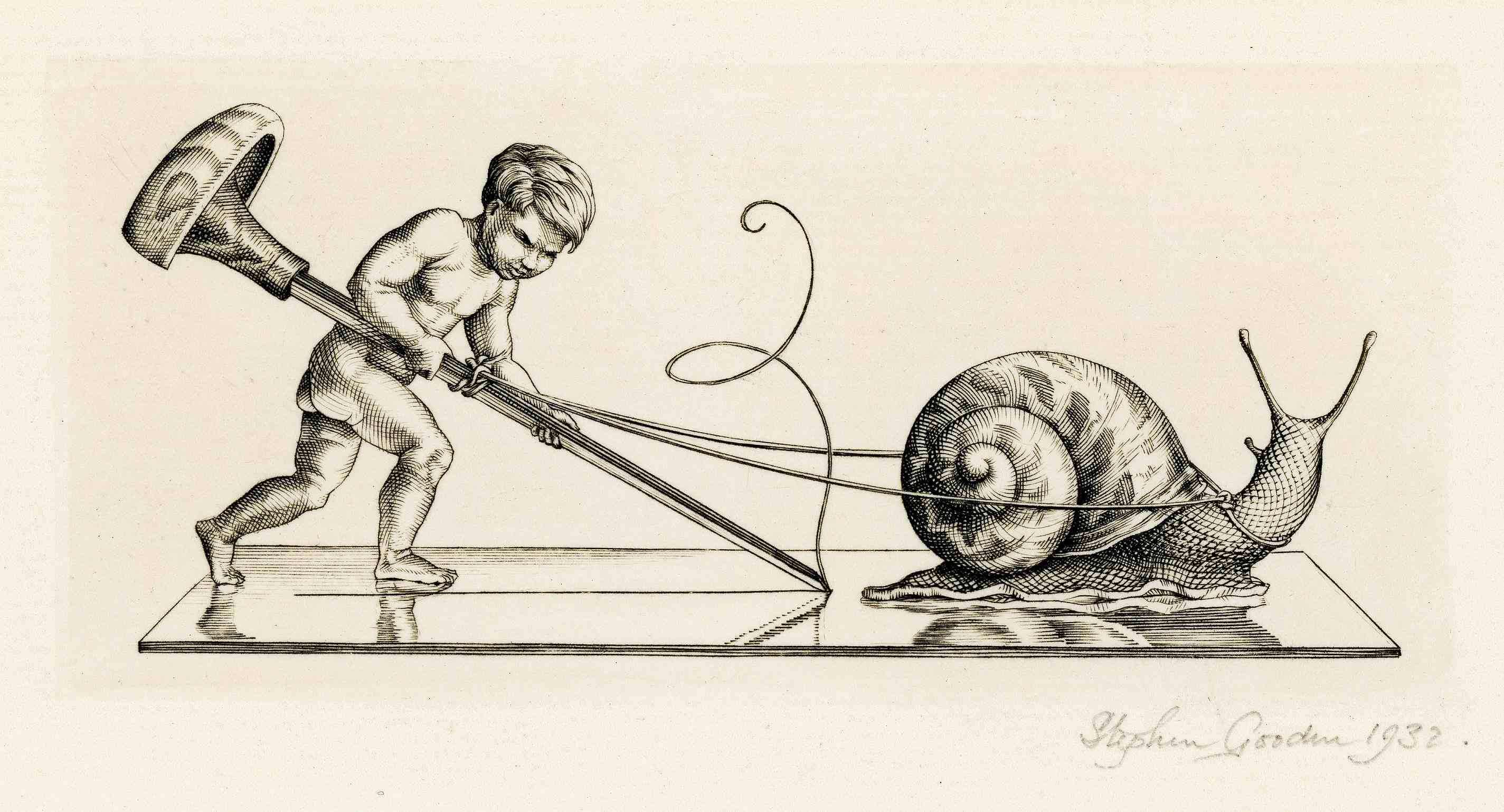
E13: Boy and snail
Date: 1932
Plate size: 51 x 114 mm
Campbell Dodgson (1944): 13
States: only state
Proofs: Unknown
Notes: This design was used on catalogues of Gooden's prints shown at the Ulysses Book Shop in London in 1932 and on the catalogue of an exhibition arranged by Bertram Rota, another book-dealer, in 1933. The number of proofs printed from the plate is not recorded in Dodgson (1944).
Thanks to MH, to whom I gave this proof.
E18: Saint George
Date: 1935
Plate size: 151 mm in diameter
Campbell Dodgson (1944): 18
States: four
Proofs: 100 impressions
Notes: This plate was engraved in 17 days to be ready for an exhibition at the Royal Academy. The design was used as the basis for a new version of the George Medal for galantry.
E19: Satyrs
Date: 1937
Plate size: 151 mm in diameter
Campbell Dodgson (1944): 19
States: five
Proofs: 100 impressions
Notes: This plate was engraved for the Print Collectors' Club, shown by the letters on the quiver of arrows.
E23: Old Whisk
Date: 1940
Plate size: 60 x 86 mm
Campbell Dodgson (1944): 23
Proofs: unknown
Notes: This was not published or issued in any known edition. The proof shown was given to friends. He has signed it 'Stephen Gooden A.R.A.', as an Associate of the Royal Academy. He was elected an Associate on 27th April 1937 and made a full Academician on 25th April 1946.
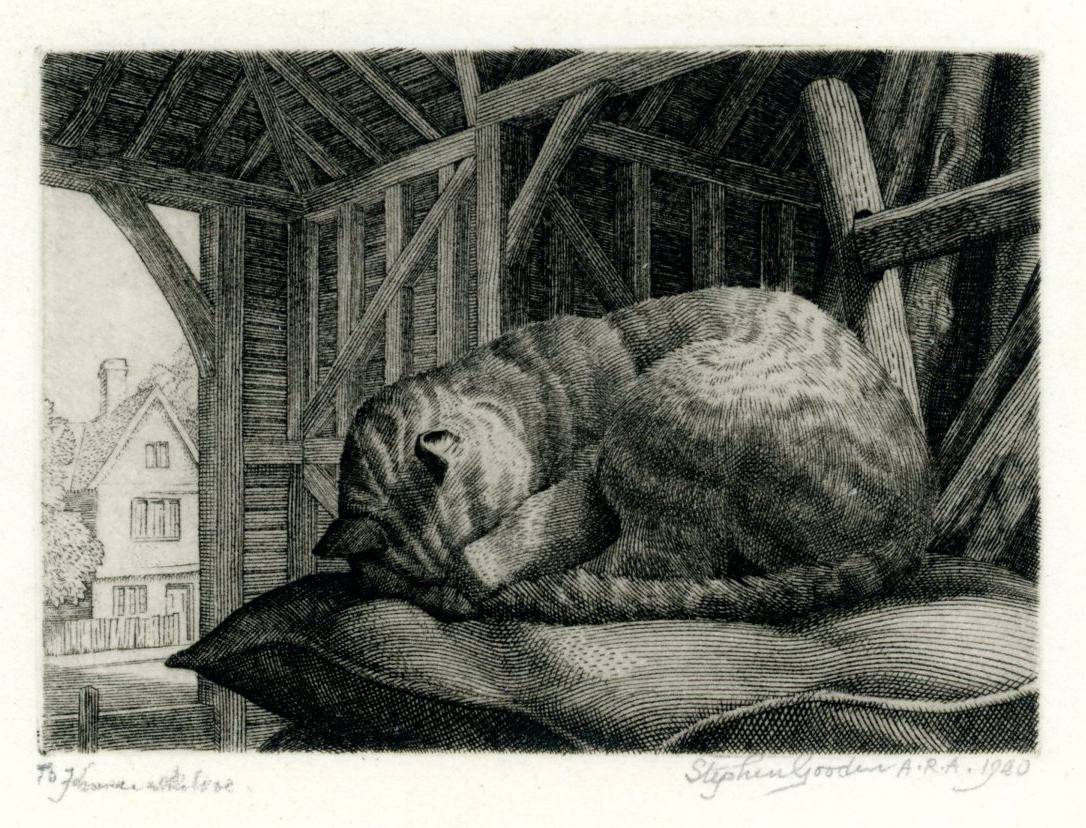
E24: Triton
Date: 1941
Plate size: 175 x 125 mm
Campbell Dodgson (1944): 24
Proofs: unknown
Notes: This is a good example of both Stephen Gooden's skill as an engraver and his wonderful imagination.
This engraving is reproduced at 70% of the size of the other engravings here.
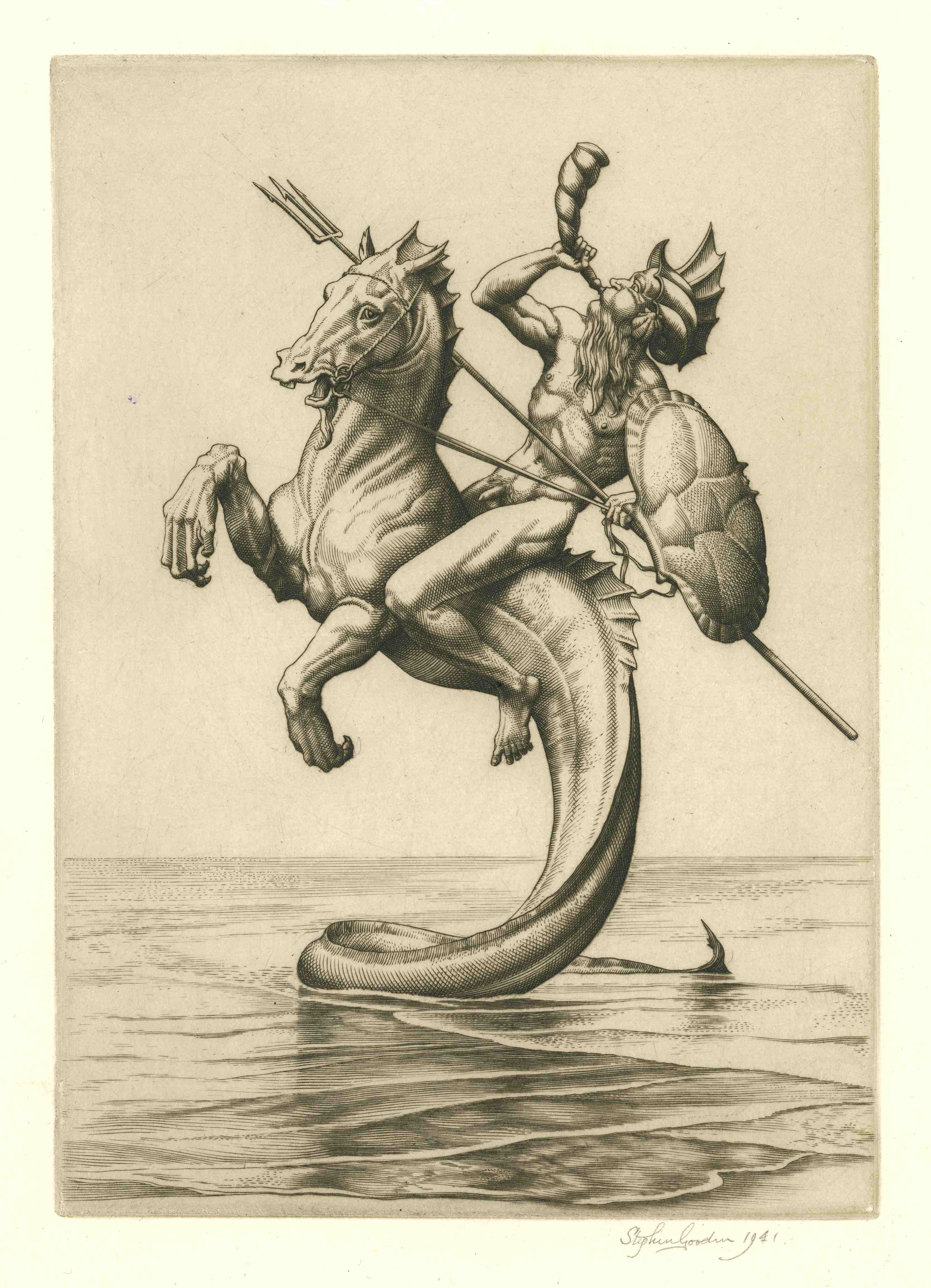
E25: Cupid
Date: 1941
Plate size: 95 x 62 mm
Campbell Dodgson (1944): 182
Proofs: 12
Notes: This engraving was used by Stephen Gooden as a Christmas card. I have a proof pasted onto blue paper which he gave to his mother at Christmas in 1941.
